Bad weather or not, I was out there to get me some flying predators, as I have not done so for a while, and one rusts when one doesn't practice.
The clouds were closing in.
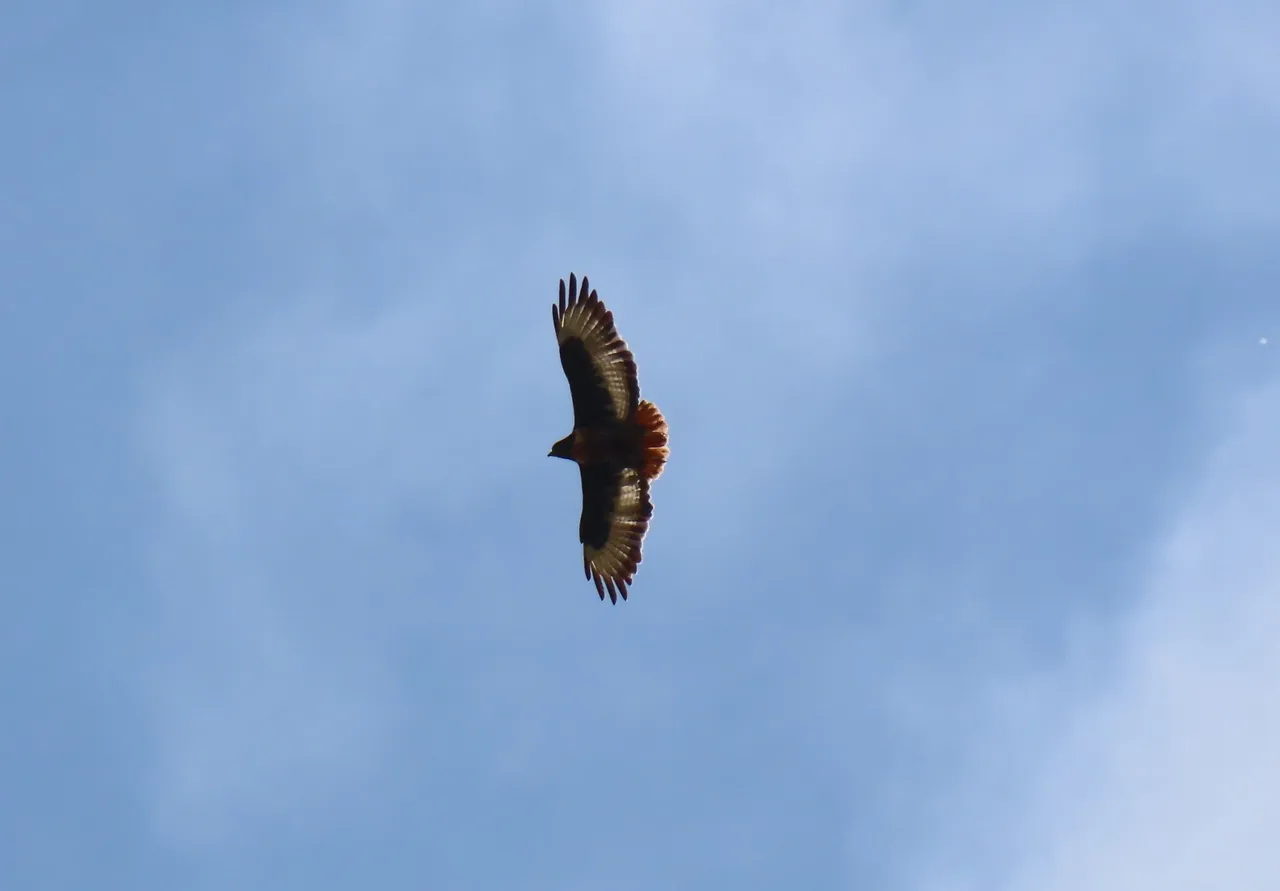
The best time to go and look for birds of prey, is before the rain arrives.
They know the weather even better than we do, but we have to congratulate our weatherman, as the prediction of rain is correct.
The birds have to eat before nightfall and some of them also still have youngsters to feed. So, I made a plan to visit my favorite hunting spot in the sky, with my camera of course, and come to see what I got.
Now this guy below looked like a Kite and I would venture to say that it was a Yellow-billed kite (Milvus aegyptius).
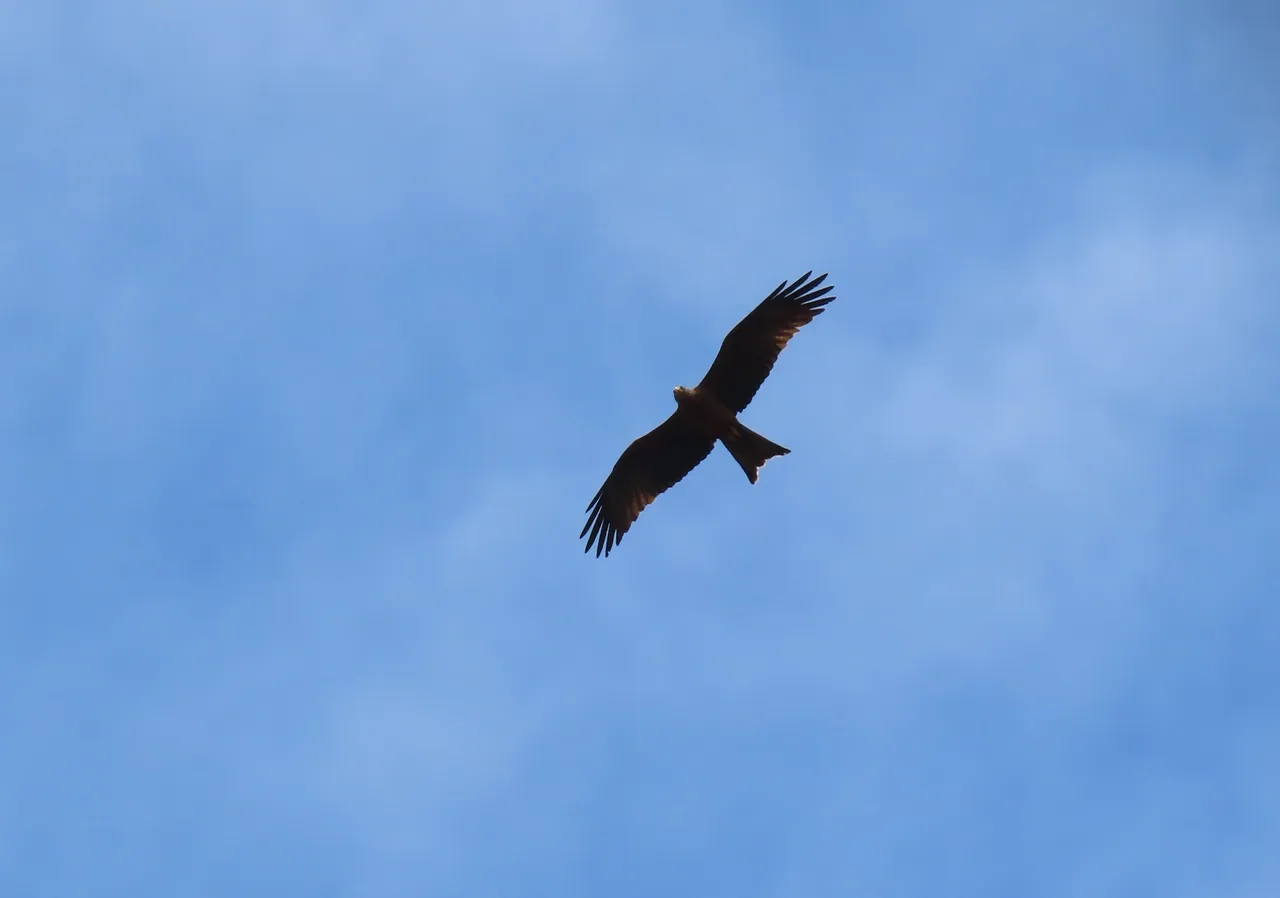
He cruised around in circles hunting for prey. All kites have forked tails.
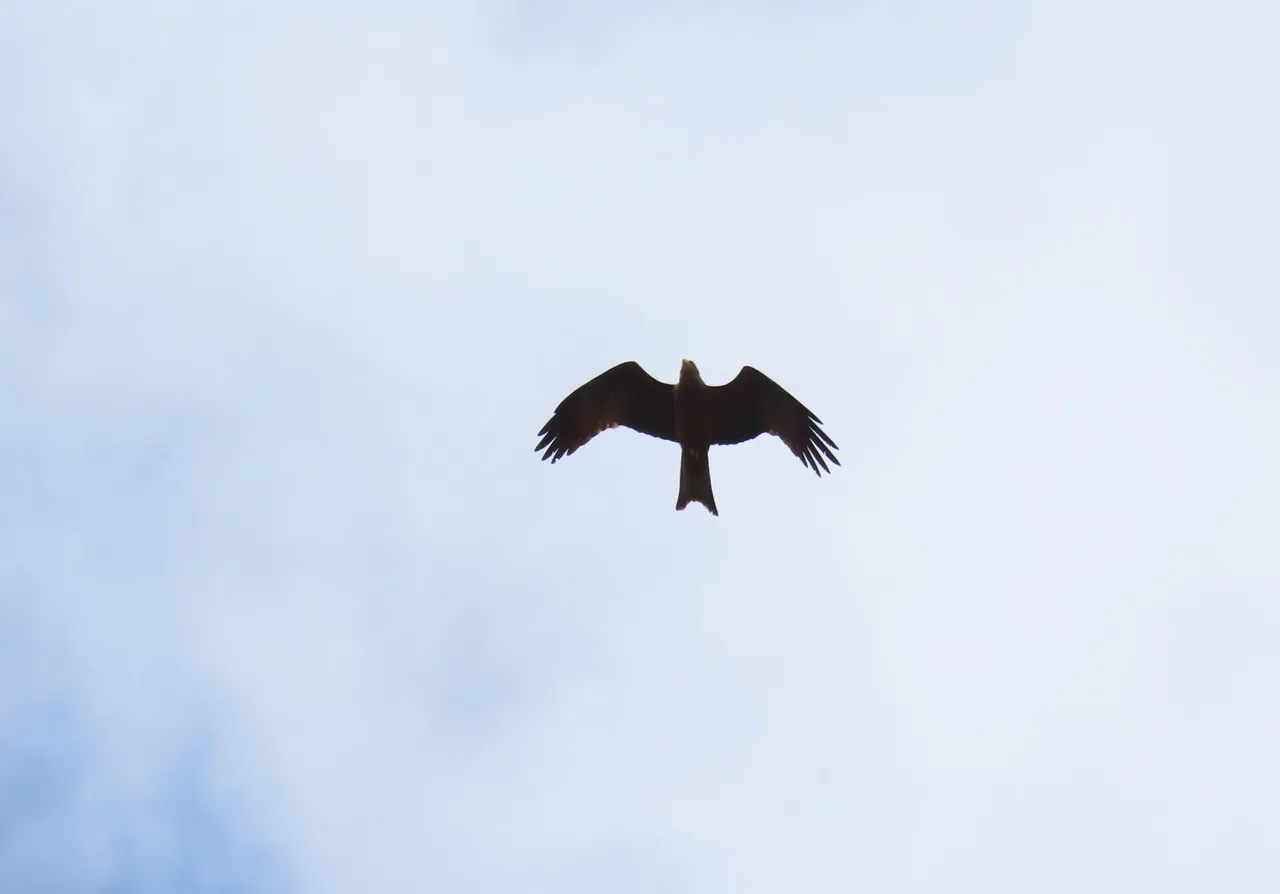
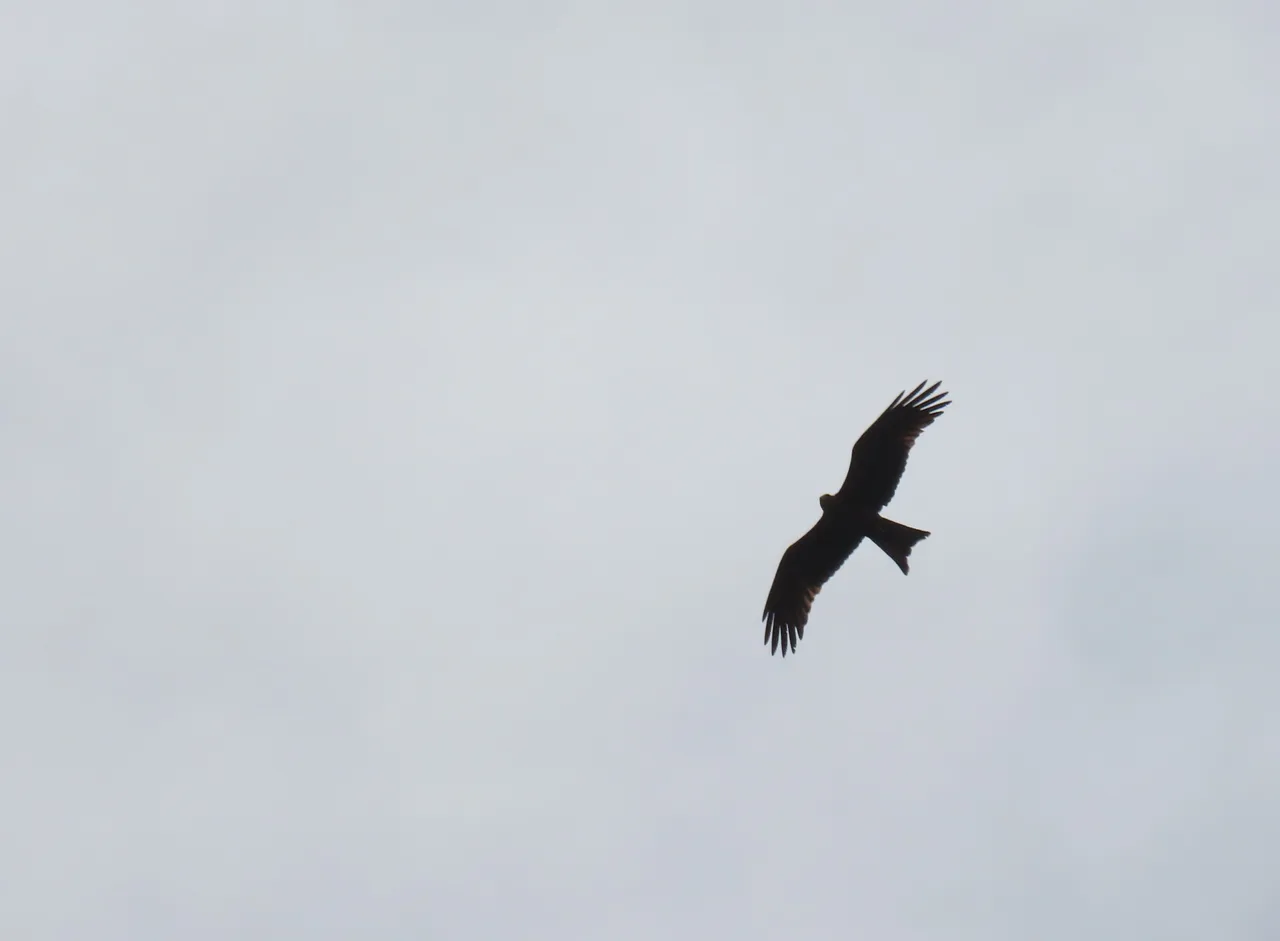
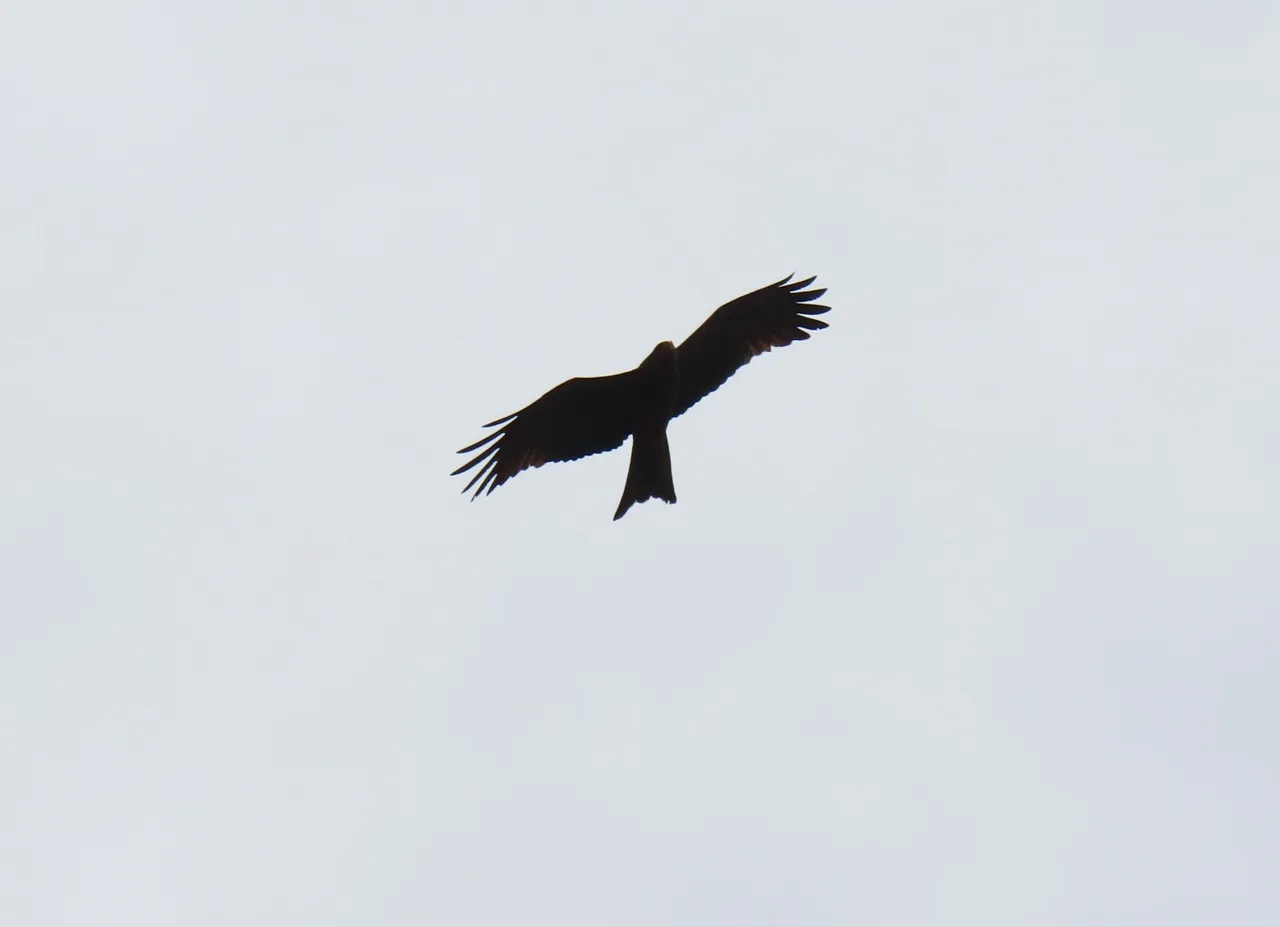
Suddenly a flock of birds took off and I knew what was coming.
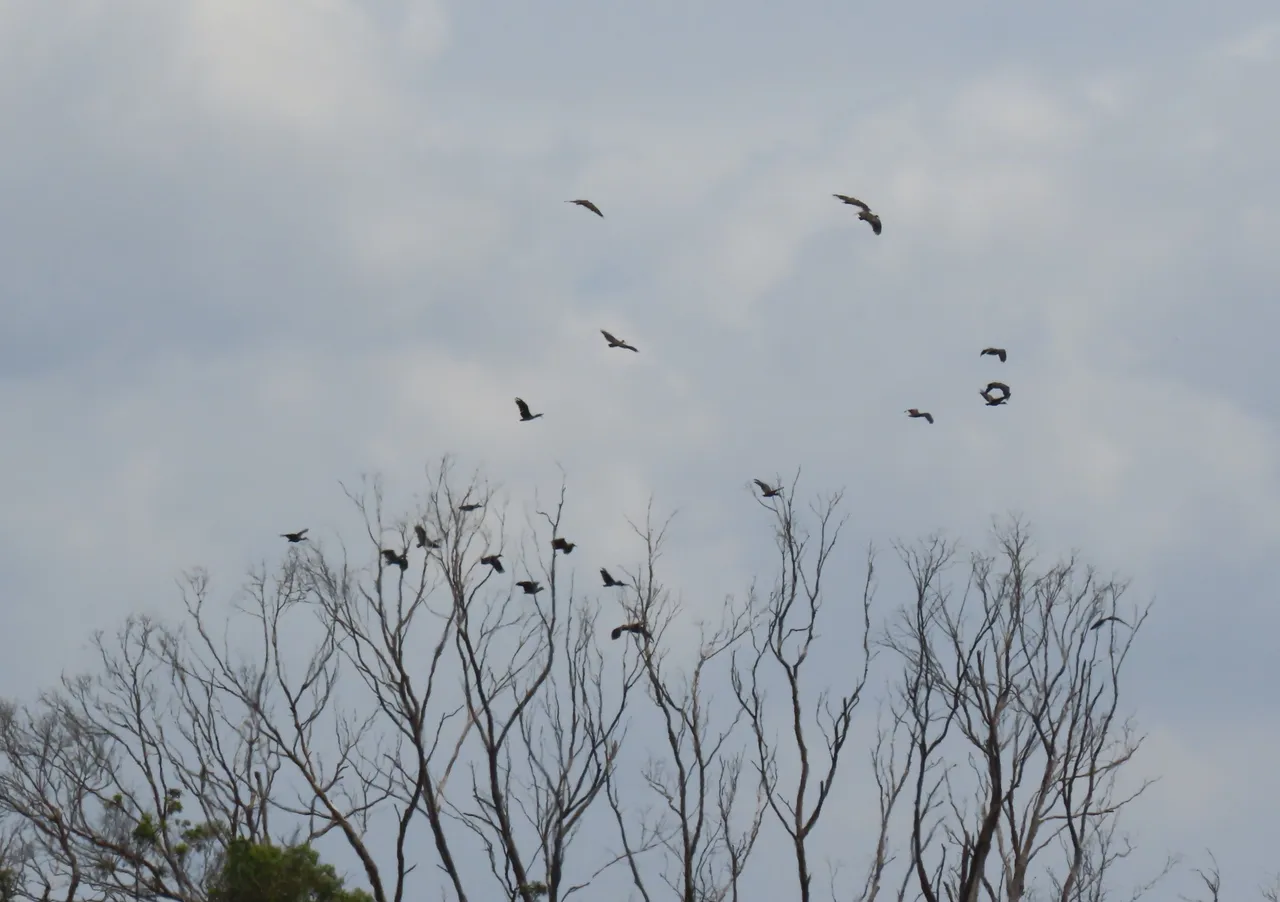
Yep! The birds saw a Sparrow Hawk (Accipiter melanoleucus) coming over, and I was glad to get this shot of it, as they fly at a tremendous speed.

Definitely a Pied Crow (Corvus albus), and he had something to eat.
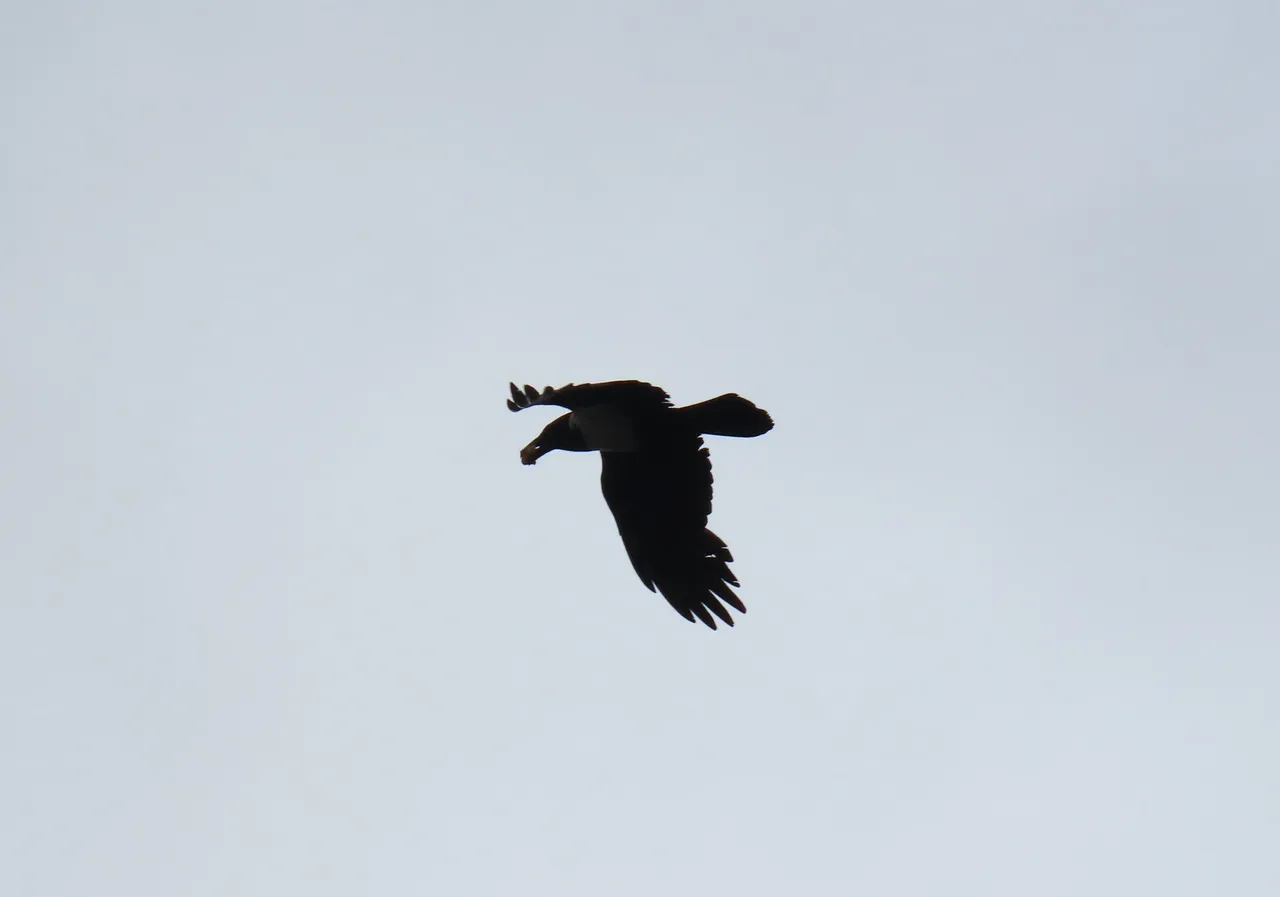
Now what do you think this is?
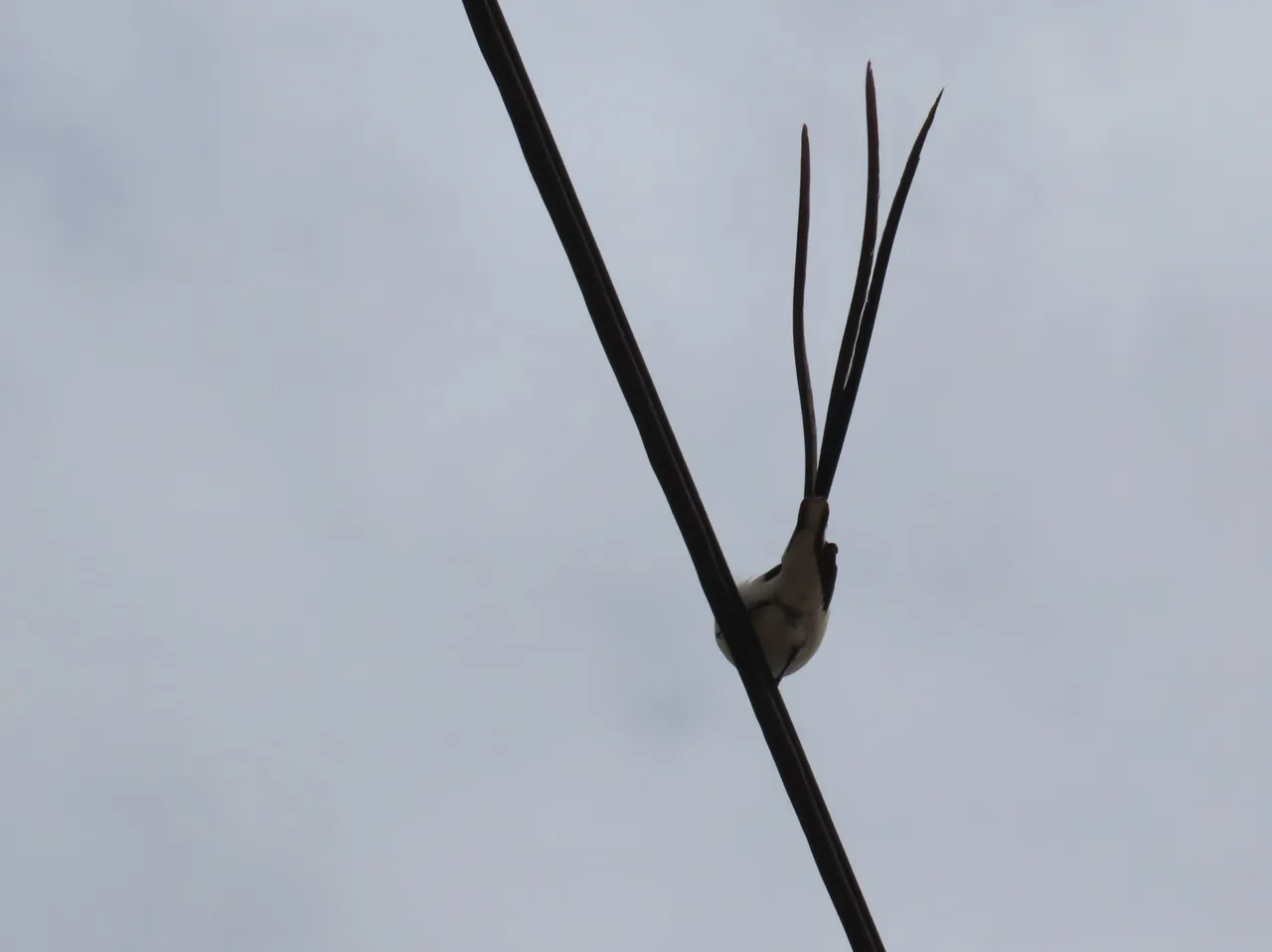
This is a very cheeky little fellow, and he doesn't have to go and hide as no bird of prey will eat him. It is a Pin-tailed Whydah (Vidua macroura).
Not only that, but also a very interesting little bird, with peculiar habits, and you will see that his many wives are very lazy as they lay their eggs in the nests of finches, as stated below.
The species is a brood parasite which lays its eggs in the nests of estrildid finches, especially waxbills. Unlike the common cuckoo, it does not destroy the host's eggs. Typically, 2–4 eggs are added to those already present. The eggs of both the host and the whydah are white, although the whydah's are slightly larger. The nestling whydahs mimic the gape pattern of the fledglings of the host species.
If you want to know more about this fella, visit the source link.
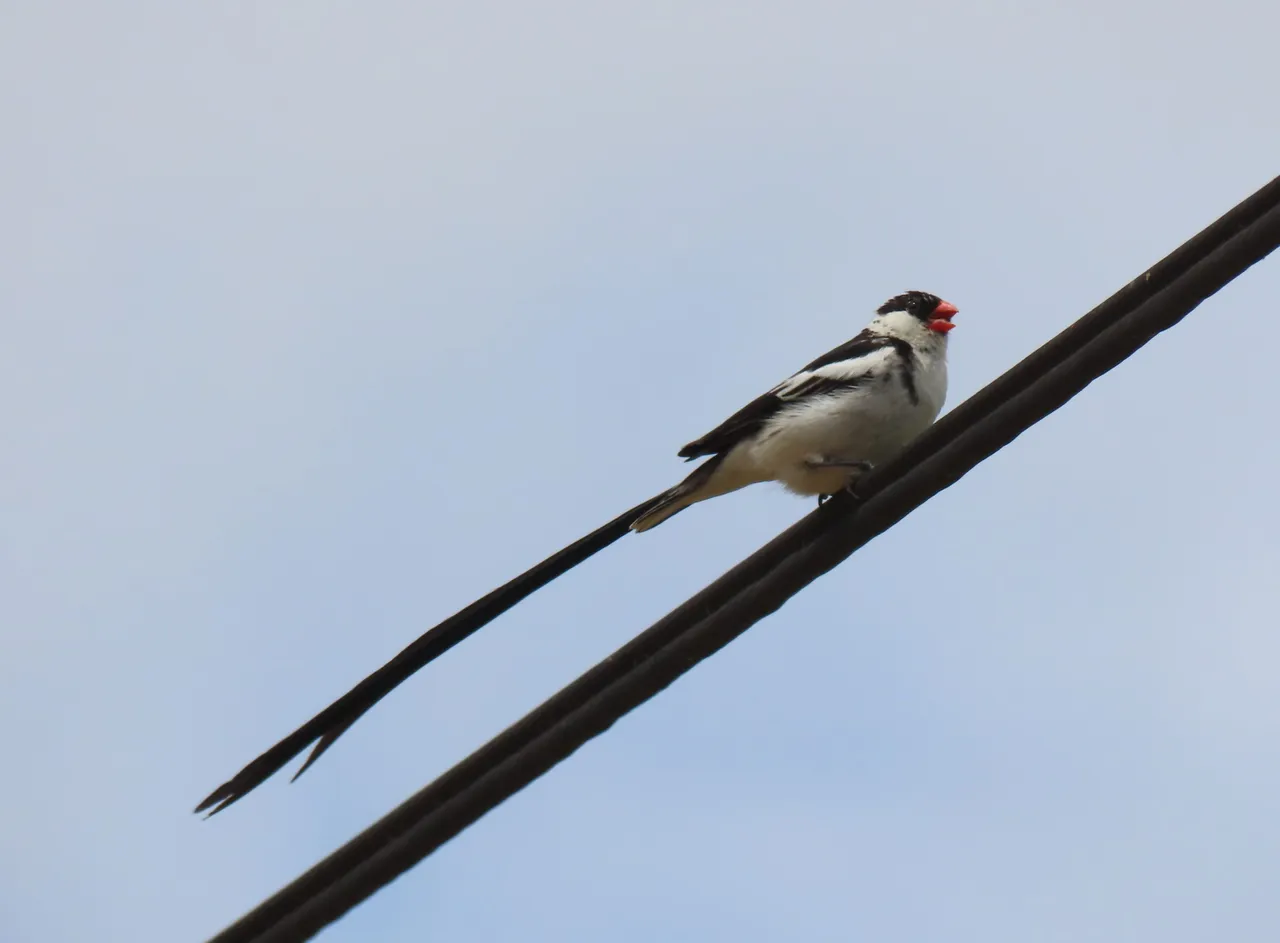
As usual, the missus was around foraging and proudly she showed me a treasure.
While I was taking photos of the birds, my wife was busy hunting in the bushes and along the paths for what she calls "treasures", and she found a strange round thing covered in a spider's web.

Thankfully, to us, it is not a strange thing because this is an old Rain Spider's nest. We've had two right here at our home in our back garden, and I have posted the hundreds of babies coming out of the nests before.
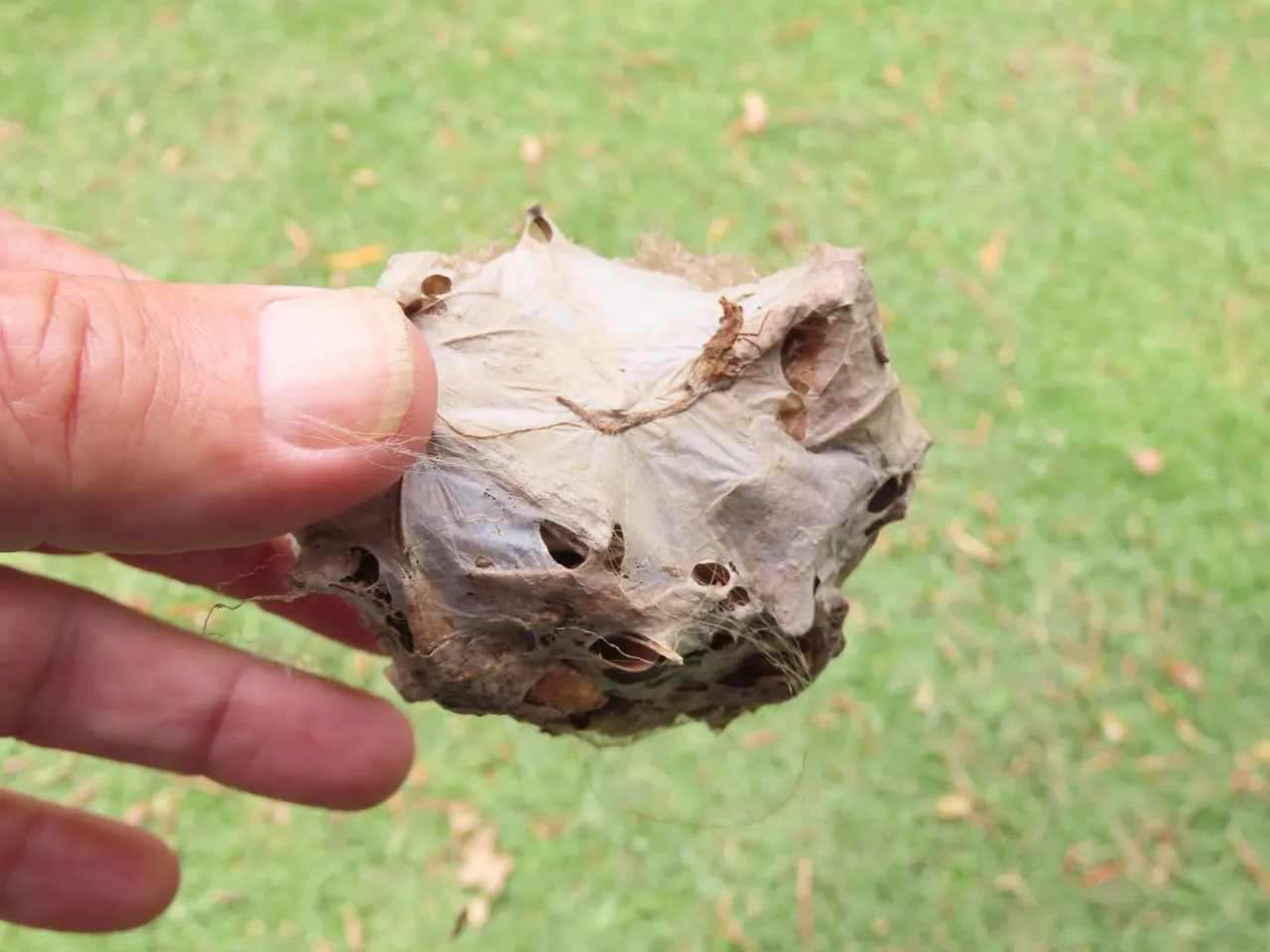
Should you want to read some very interesting facts about rain spiders, only found in South Africa, have a look at the source below.
We have such a wide variety of predator birds here, that at times it is difficult to decide where to go to find them. Aside from getting birds on camera and enjoying watching their beauty, it is also very healthy to be outdoors appreciating everything that the Creator has made.
For the two of us, and some others, the treasures found in nature far outweigh anything we can buy in a shop. They bring happiness far beyond what is "offered" by the world, and they offer very important lessons that only creation can give.
So, what is the lesson for today and for the remainder of this year (and those to come)? Never forget to be awake to creation everywhere outdoors. Do not take them for granted, as they will not always be with us, and one day when we depart from this world we would need to look back and ask, were we thankful enough and did we truly understand what it means to be a human being amidst nature and all of creation?
Did we not only hear, but did we really HEAR?
Did we not only see, but did we really SEE?
Did we not only experience, but did we FEEL?
May our lives never dwindle into mediocre or complacency.
Only good wishes sent your way for the weekend and week ahead.
Photos by Zac Smith-All Rights Reserved.
Camera: Canon Powershot SX70HS Bridge camera.
Thank you kindly for supporting this post.